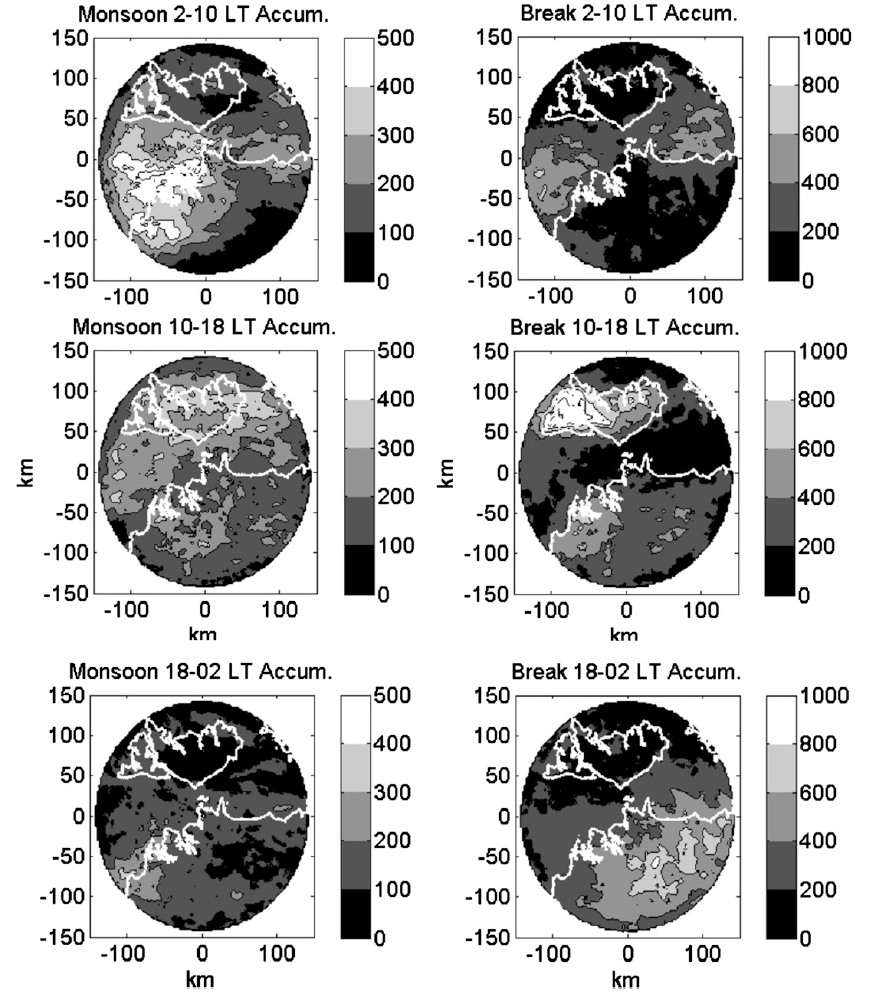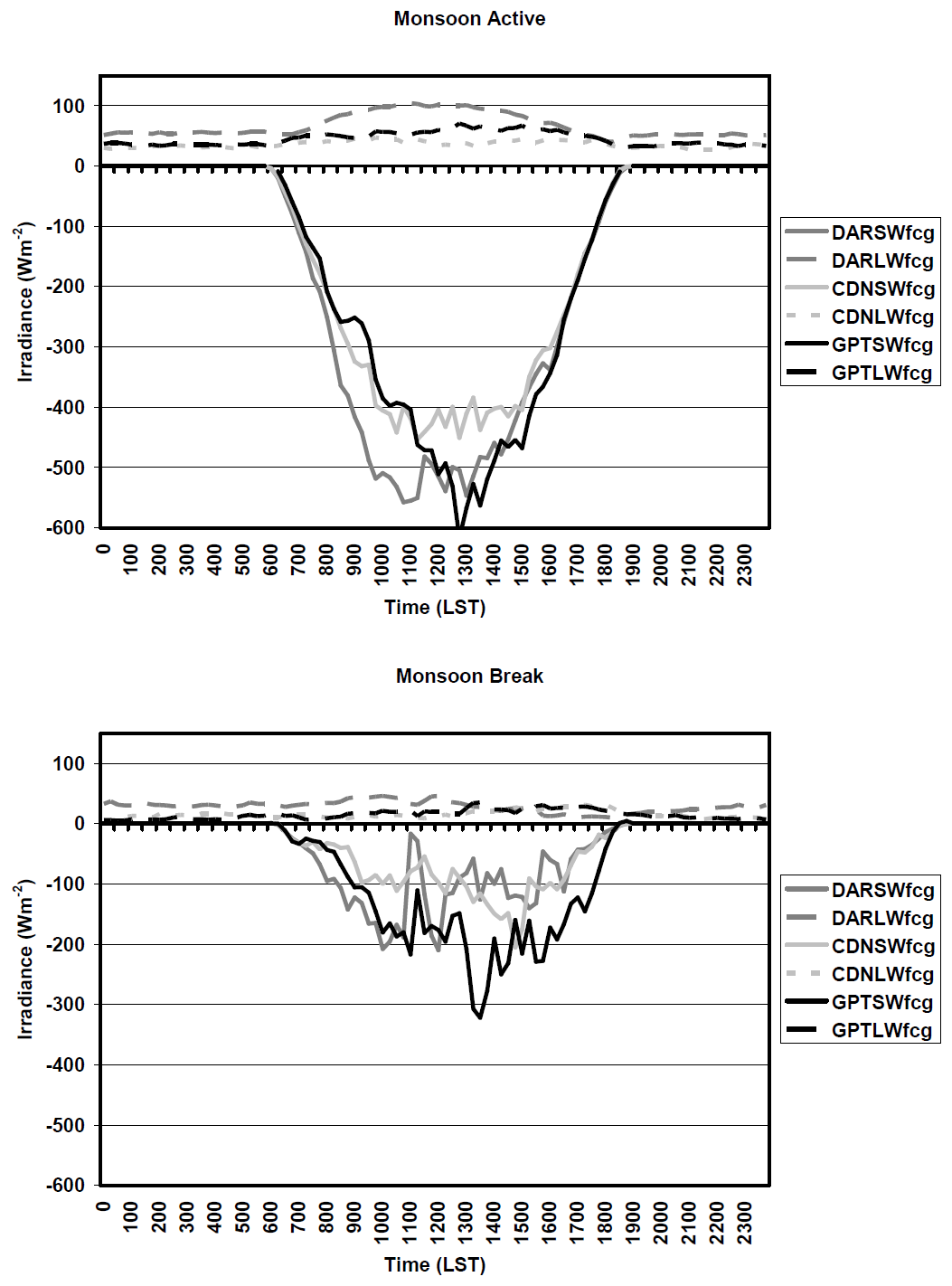Diurnal Cycle of Monsoon Clouds, Precipitation, and Surface Radiation
Submitter:
Long, Chuck N. — NOAA- Earth System Research Laboratory
May, Peter T. — Monash University
Area of research:
Cloud Processes
Journal Reference:
Science
The processes governing rainfall in coastal areas affected by monsoon rains are of great importance, as these regions include major population areas around the globe. Yet the diurnal variation of convection and associated cloud and radiative properties remains a significant issue in global forecast and climate models. This study analyzes observed diurnal variability of convection in a coastal monsoonal environment, examining the interaction of convective rain clouds, their associated cloud properties, and the impact on the surface radiation and corresponding boundary-layer structure during periods where convection is suppressed or active on the large scale. The analysis uses data from the Tropical Warm Pool-International Cloud Experiment (TWP-ICE) as well as routine measurements from the Australian Bureau of Meteorology and the U.S. Department of Energy Atmospheric Radiation Measurement (ARM) Climate Research Facility at Darwin, Australia. Both active monsoonal and large-scale suppressed (build-up and break) conditions are examined.
Impact
To provide an observational reference for the improvement of models, the analysis conducted in the present study has characterized with state-of-the-art observations the diurnal cycle of convection, cloud, radiation, and boundary-layer structure in the two dominant monsoonal regimes, namely the ‘‘monsoon’’ and ‘‘build-up or break’’ regimes. It clearly demonstrates the consistency and interdependence of the convective activity, resulting rainfall, cloud cover, and radiative properties feeding back onto the boundary-layer structure in both convectively active and unstable monsoon conditions, and in (break) conditions that are convectively suppressed on the large scale where convective initiation is dominated by local forcing. The break period situation is important in the large-scale context of convection in the Maritime Continent on daily and seasonal time scales.
The spatial distribution of rainfall shows distinct structure in both monsoon and break periods. In the monsoon there is a pronounced east-west asymmetry with more rainfall over the ocean. The break period shows distinct peaks on the western coasts associated with the advection and intensification of storms as they propagate toward the coast and there are mergers of cells. The break also exhibits a much stronger diurnal signal in rainfall and resulting cloud cover, but there remained significant diurnal variation in the monsoon also.
The active monsoon decreases the total net radiative input to the surface more than three times the amount than the suppressed break regime does. This total radiative cloud forcing is dominated by the shortwave cloud effects because of the much larger optical thicknesses and persistence of ice clouds associated with the monsoon regime. While the total net cloud radiative forcing is modestly positive at night, the daylight loss of radiative input to the surface is many times larger in magnitude. These differences in monsoon versus break surface radiative energy contribute to low-level air temperature differences in the boundary layer over the land surfaces, which in turn influence the strength of the sea breezes.
Summary
This study demonstrates that the diurnal variation of rainfall is much larger during the break periods, and the spatial distribution of rainfall is very different between the monsoon and break regimes. During the active monsoon, the total net radiative input to the surface is decreased by more than three times the amount than during the break regime. This total radiative cloud forcing is found to be dominated by the shortwave cloud effects because of the much larger optical thicknesses and persistence of long-lasting anvils and cirrus cloud decks associated with the monsoon regime. These differences in monsoon versus break surface radiative energy contribute to low-level air temperature differences in the boundary layer over the land surfaces, which in turn influence the strength of sea breezes.



